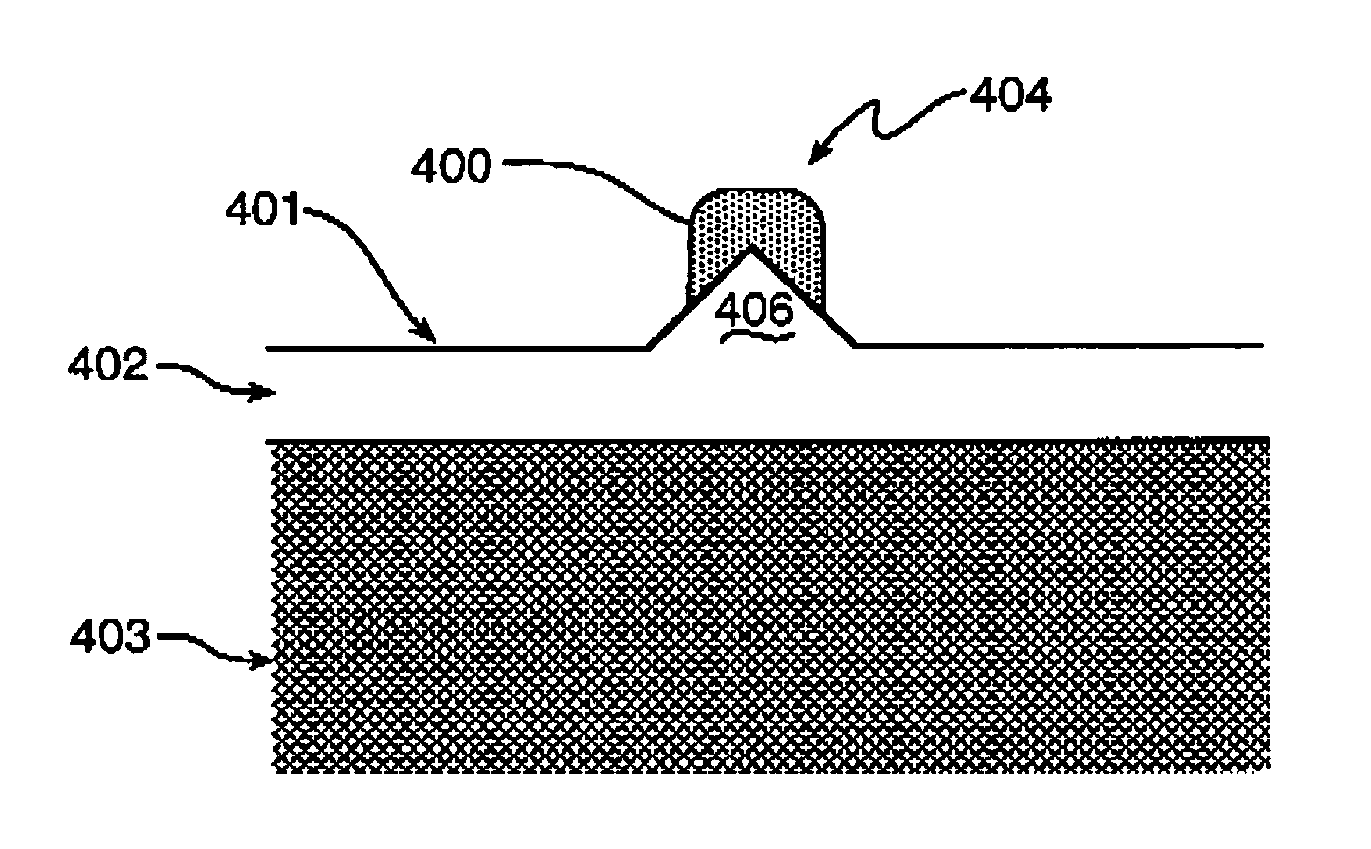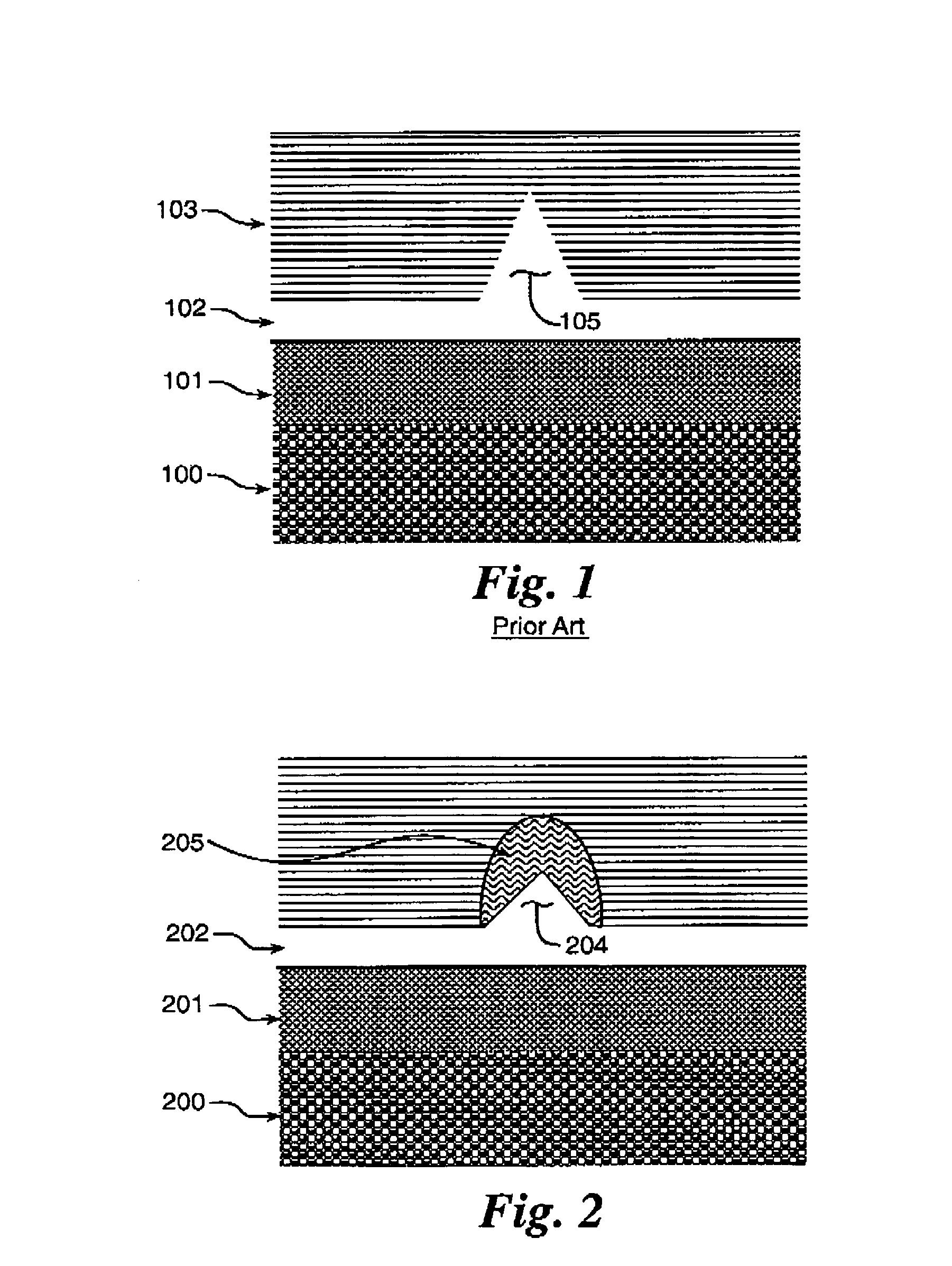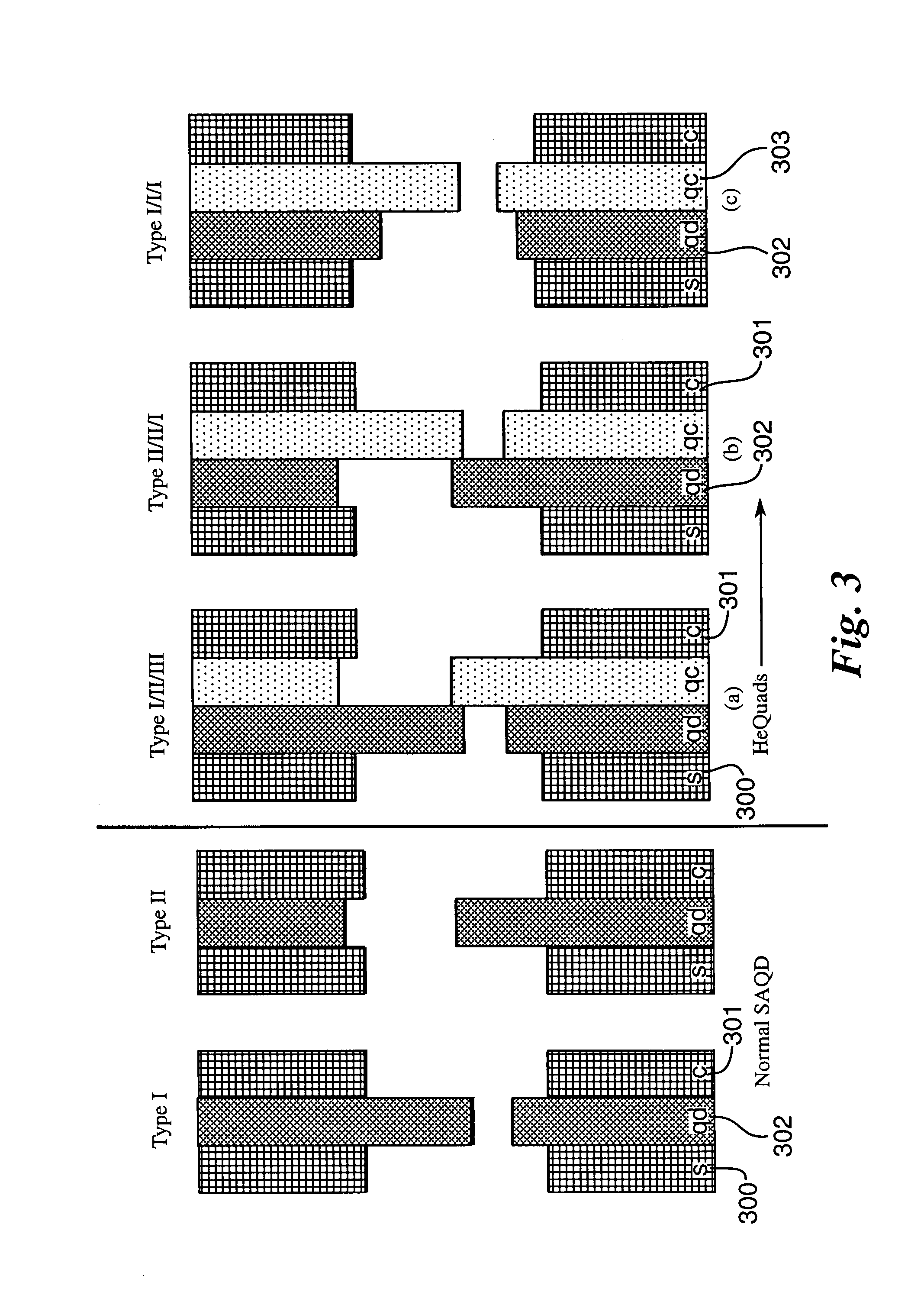Heterostructure self-assembled quantum dot
- Summary
- Abstract
- Description
- Claims
- Application Information
AI Technical Summary
Benefits of technology
Problems solved by technology
Method used
Image
Examples
Embodiment Construction
[0030]This present invention discloses and describes the formation of heterostructure self-assembled quantum dots (HeQuaDs) by utilizing the inherent strain profile present in an uncapped lattice mismatched quantum dot (such as in the case of InAs self-assembled quantum dots formed on GaAs, for example) to subsequently induce immediate hetero-epitaxy of a similarly strained material to form a composite dot structure as shown in FIG. 2. FIG. 2 shows a diagram of a heterojunction self-assembled quantum dot formed during epitaxial growth according to a preferred arrangement of the invention. After selecting a semiconductor substrate 200, materials are grown 201 that are nearly lattice matched on the substrate 200 using epitaxial growth techniques. This growth may be many layers depending on the application. Then a highly strained material 202 is deposited on the 201 surface to form a self-assembled quantum dot 204.
[0031]A similarly strained material is then deposited on the self-assemb...
PUM
 Login to View More
Login to View More Abstract
Description
Claims
Application Information
 Login to View More
Login to View More - Generate Ideas
- Intellectual Property
- Life Sciences
- Materials
- Tech Scout
- Unparalleled Data Quality
- Higher Quality Content
- 60% Fewer Hallucinations
Browse by: Latest US Patents, China's latest patents, Technical Efficacy Thesaurus, Application Domain, Technology Topic, Popular Technical Reports.
© 2025 PatSnap. All rights reserved.Legal|Privacy policy|Modern Slavery Act Transparency Statement|Sitemap|About US| Contact US: help@patsnap.com



